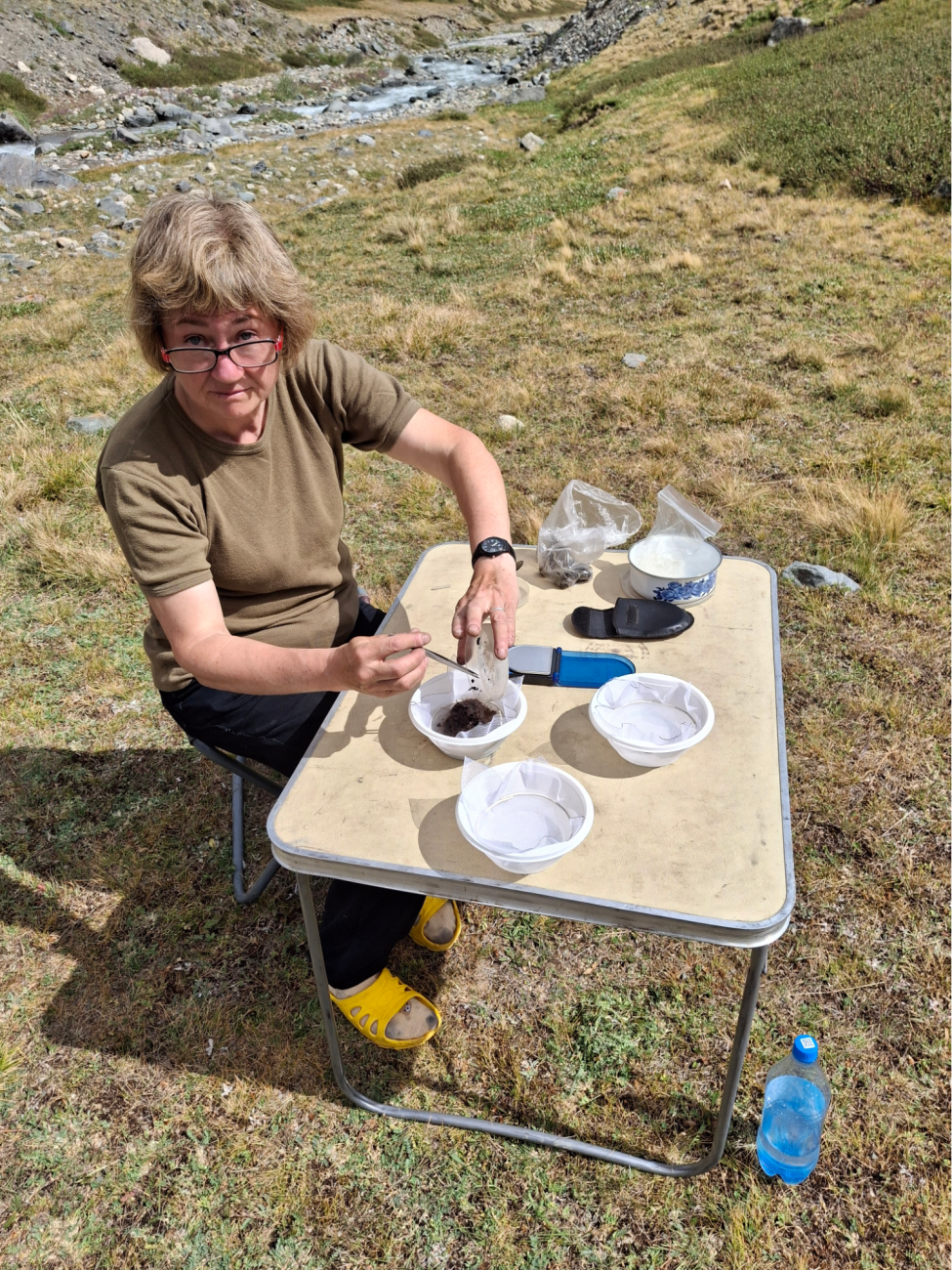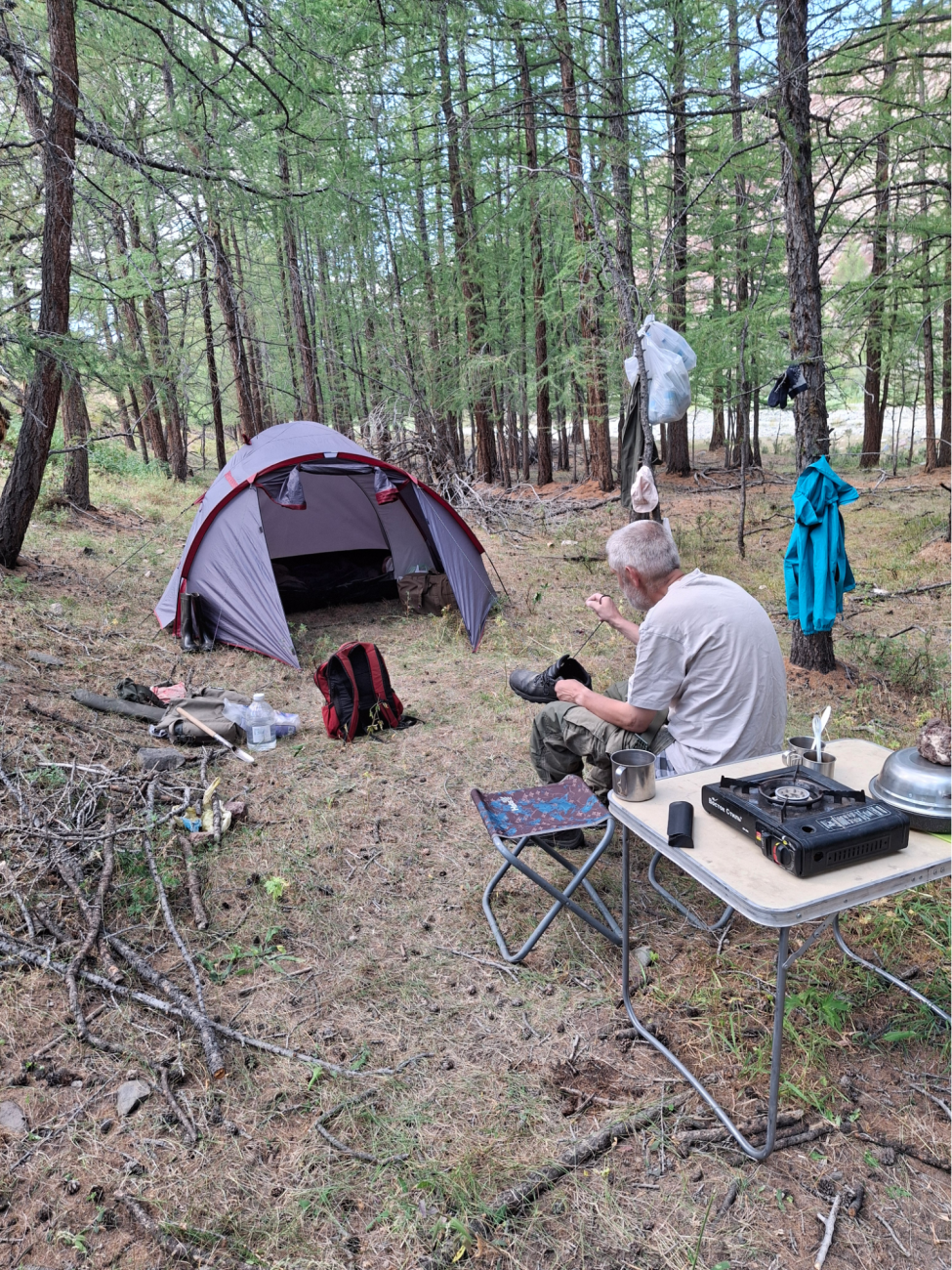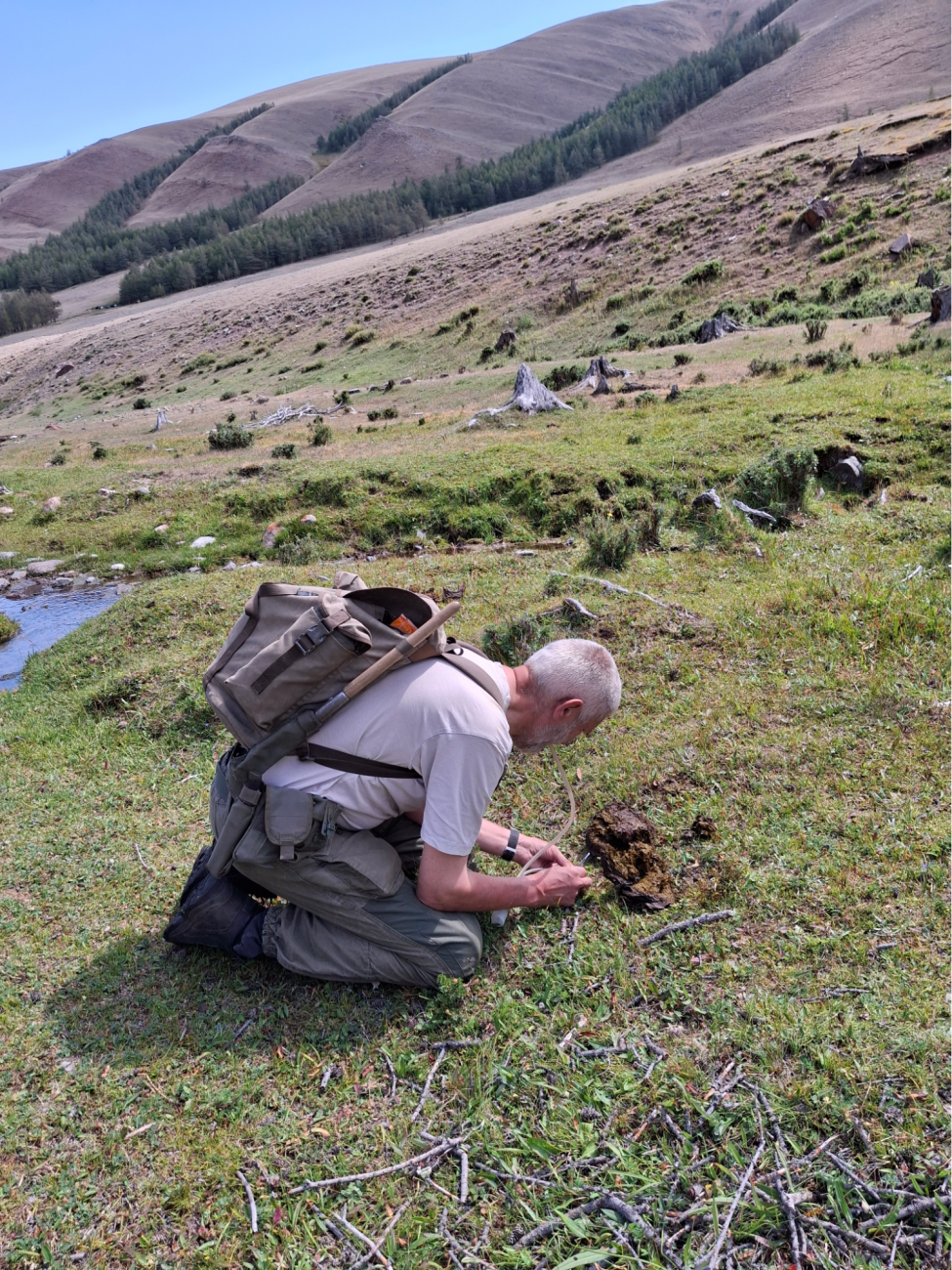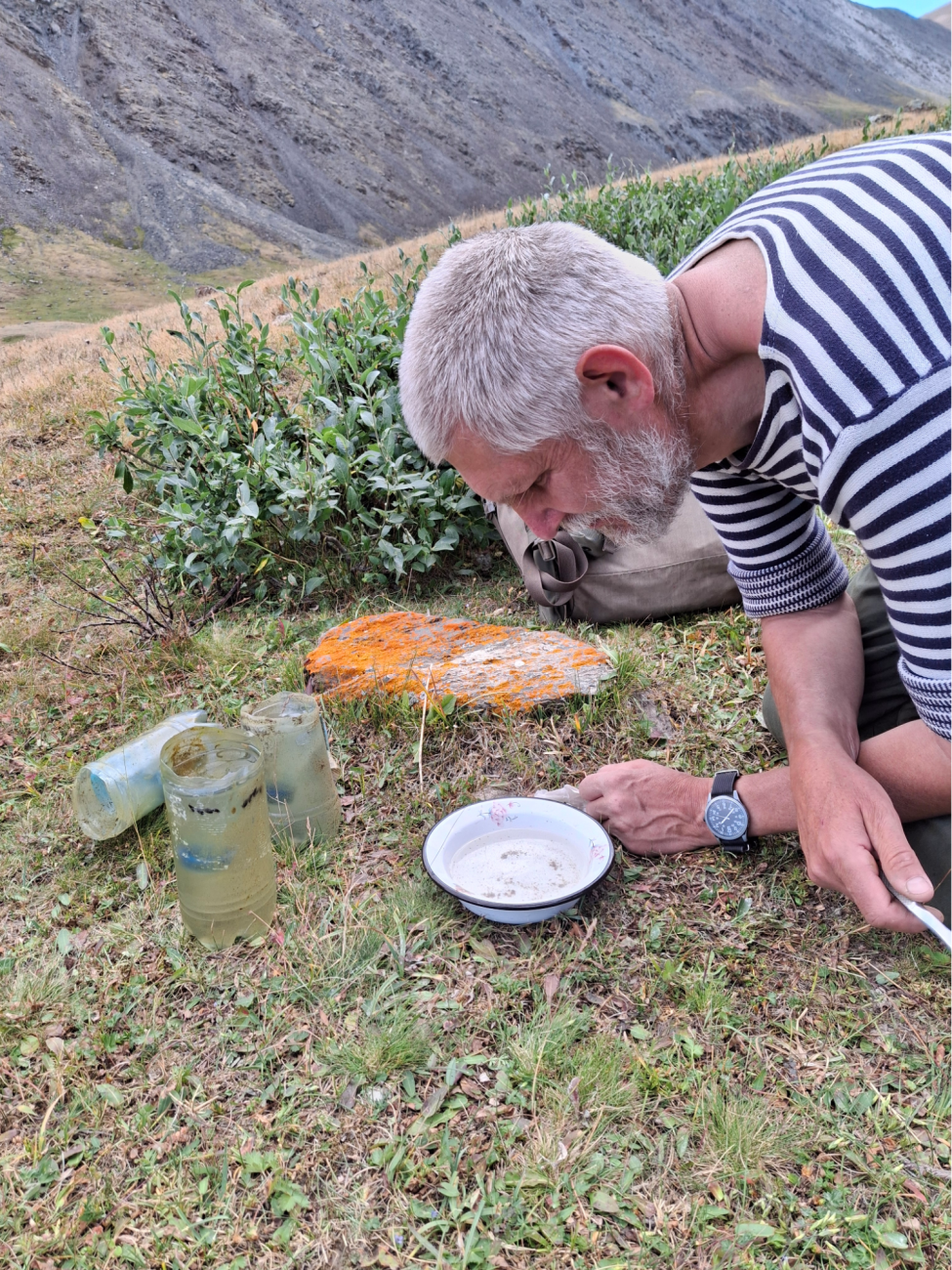
Photo: Analysis of the catch of water traps-weirs, is there anyone who isn’t there... Photo by O. Makarova.
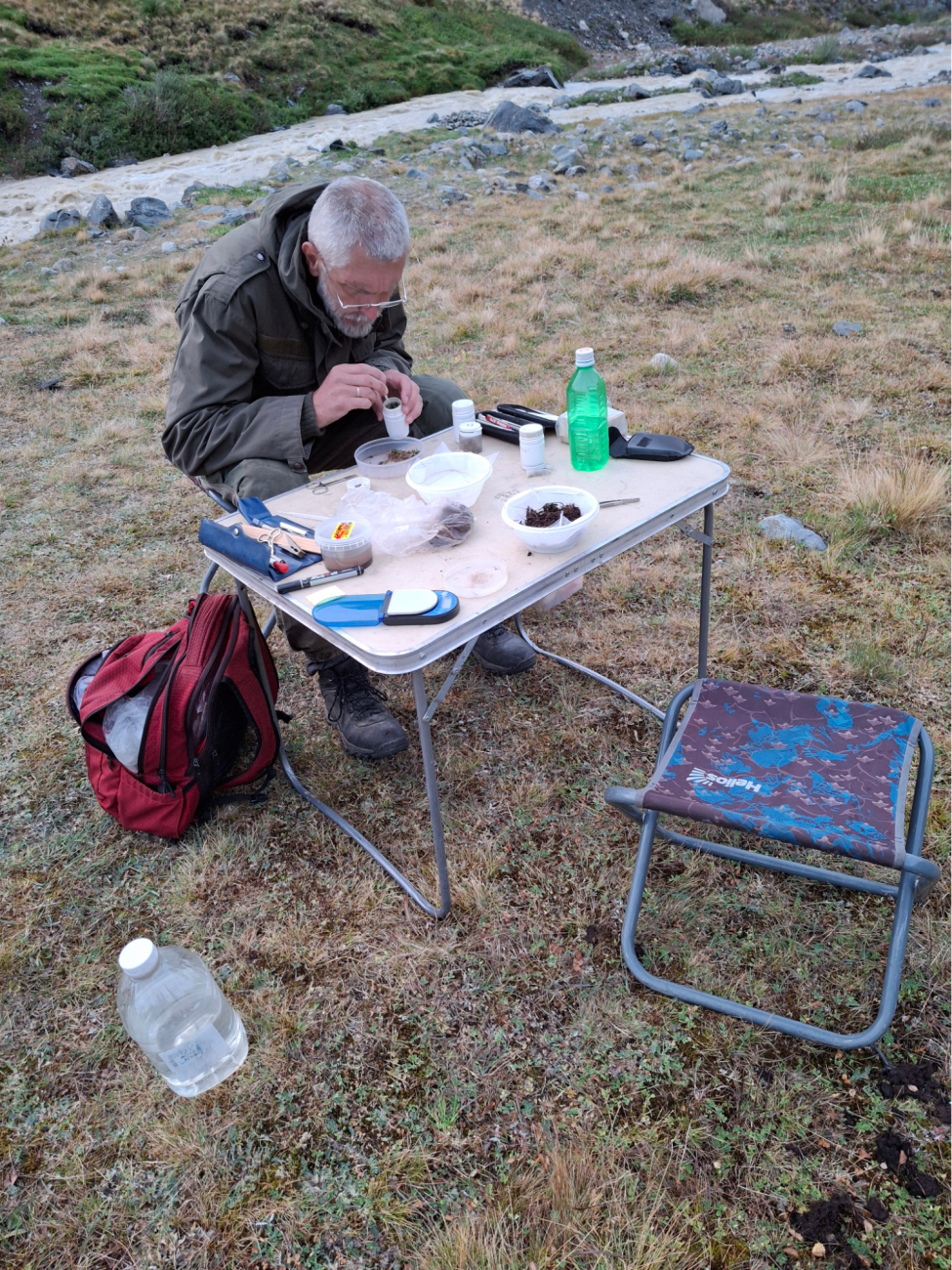
In July-August 2025, a complex zoological expedition of the A.N. Severtsov Institute of Ecology and Evolution of the Russian Academy of Sciences (IEE RAS) and the Moscow State Pedagogical University (MPGU) worked in Tuva, on the territory of the coldest and highest part of the State Nature Biosphere Reserve "Ubsunur Basin" - Mongun-Taiga. The task was not an easy one - to confirm the habitation (and, possibly, the origin) of a number of cryobiont (living in the cold) animal species, still considered Arctic, in the mountains of Southern Siberia.
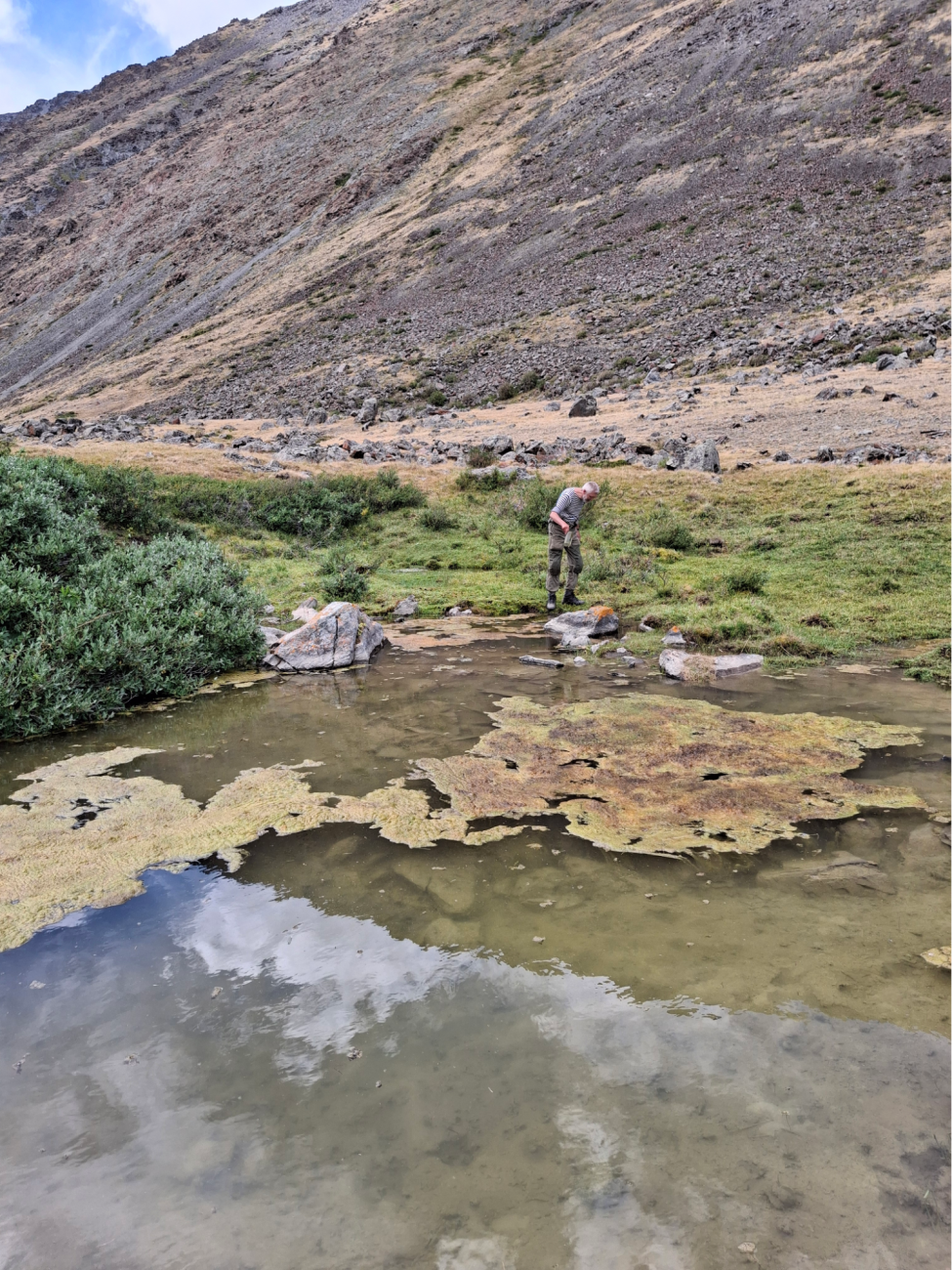
A rare biotope in the mountain steppe conditions - a small lake on the slope of Mongun-Taiga, 2600 m above sea level. Lots of beetles and crayfish (we caught them all). Photo by O. Makarova
The main objects of the work were soil and amphibious invertebrates. Extensive collections of microarthropods (ticks and springtails), earthworms and enchytraeid worms, mollusks, beetles, dipterans, bumblebees, etc. were carried out. A variety of collection methods were used - forcing soil arthropods in eclectors (Tulgren funnels), water funnels (Rombke method), catching with soil and water traps with bait, flotation of loose substrates, catching flying insects with yellow plates that attract them and with different nets during mowing, siftage of litter, setting traps for aeroplankton, manual catching (including at night using light).
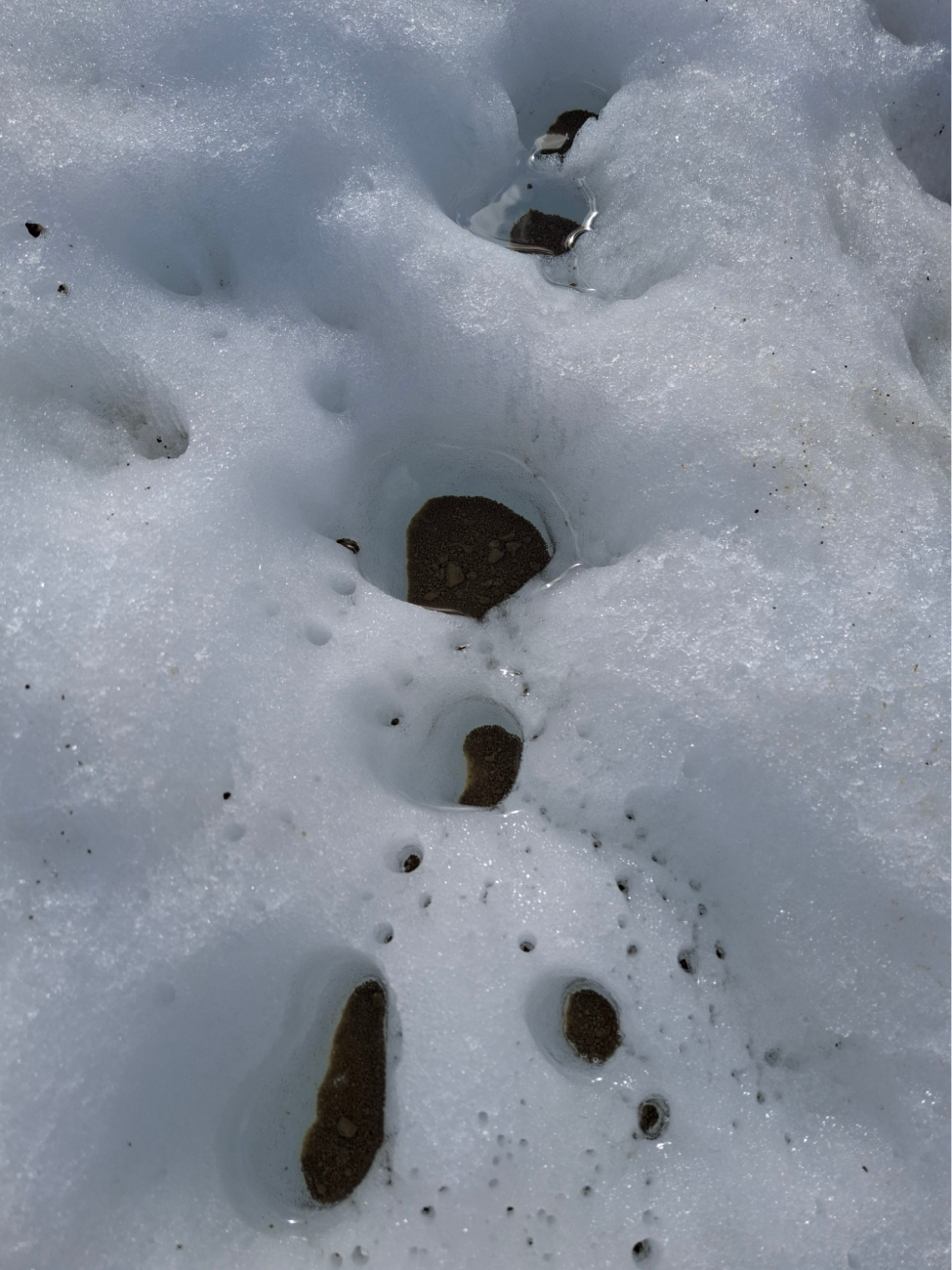
Work was also carried out on the retreating Mongun-Taiga glacier (it has retreated by approximately 1.5 km over the past 150 years). Numerous traps were installed on its surface to catch aeroplankton, and 5 liters of sand and debris in the ice deposits were flotated, and the inhabitants of cryoconites ('cups' - thawed patches on the ice filled with dark substrate) were collected. The main inhabitants of the Mongun-Taiga ice surface are springtails - amazing creatures with a jumping fork at the end of their body and a sucker on their chest - the most numerous six-legged animals on Earth. Only their small size (0.3-2 mm) is responsible for their little renown. Springtails of the genus Desoria (s. l.) live directly on the surface of the Mongun-Taiga ice, where they apparently feed on microscopic cold-loving algae and fungi. It probably represents a new species for science, as has happened more than once when studying springtails from the glaciers of the Alps and the Caucasus.
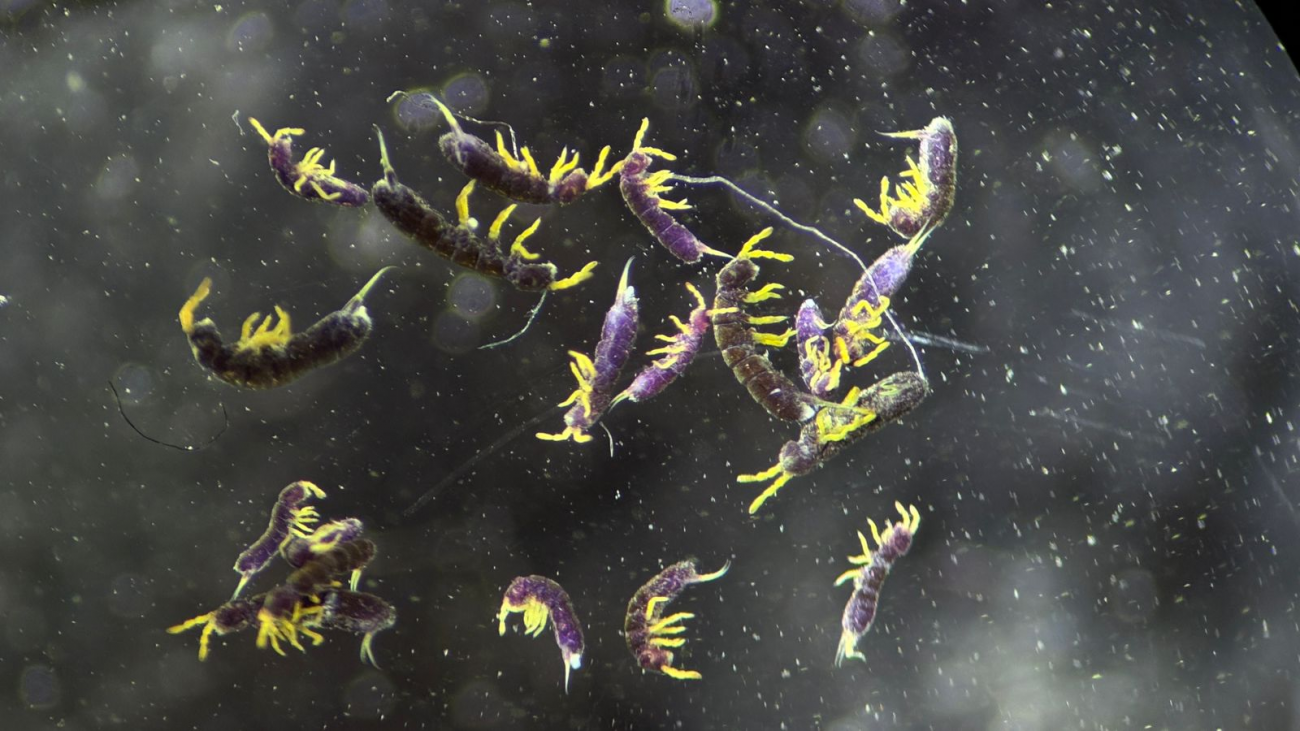
Collembola living directly on ice (Desoria s.l. sp.). Beautiful as flowers, similar to those that live on the glaciers of the European Alps. About 40 specimens were obtained by flotation of 5 liters of sand collected from the surface of the Mongun-Taiga glacier, 3200 m above sea level. Photo by M. Antipova.
In addition, a series of samples of fresh ungulate excrement were collected along the altitudinal gradient: in the floodplain of the Kargy River in the vicinity of the village of Mugur-Aksy (1800 m, cows), in the middle reaches of the Mugur River (2100 m, khainaks and yaks), at the foot of the Mongun-Tayga glacier (2500 m, yaks). The samples will be examined for intestinal parasites by specialists from the Parasitology Center of the Institute of Ecology and Evolution of the Russian Academy of Sciences.
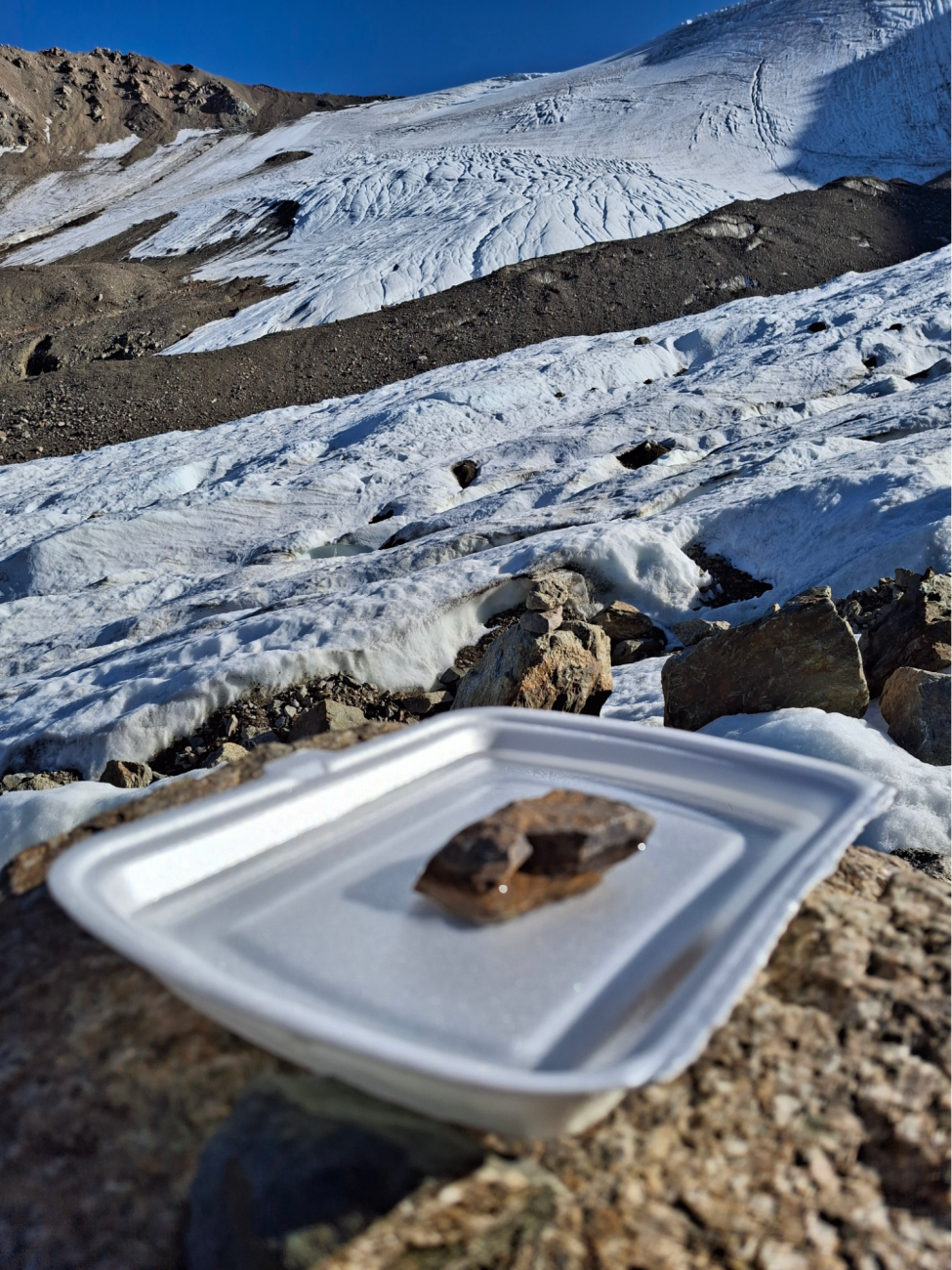
A trap for aeroplankton installed on the eastern tongue of the Mongun-Taiga glacier, 3200 m above sea level. Photo by O. Makarova.
Working with microscopic mites and springtails requires lengthy processing (currently these are only alcohol tests – distillations in eclectors), but among the beetles, numerous “arctic” species have already been identified, the finds of which during the ascent to the mountains began only at 2500 m. Part of the collected material will be sent to fellow specialists in various cities and countries: in Russia – to employees of biological institutions in St. Petersburg, Arkhangelsk, Nalchik, Tyumen, Perm, Novosibirsk, Vladivostok, as well as in Hungary, Canada and Poland. Important discoveries are certainly awaiting us, including new to science species of invertebrates.
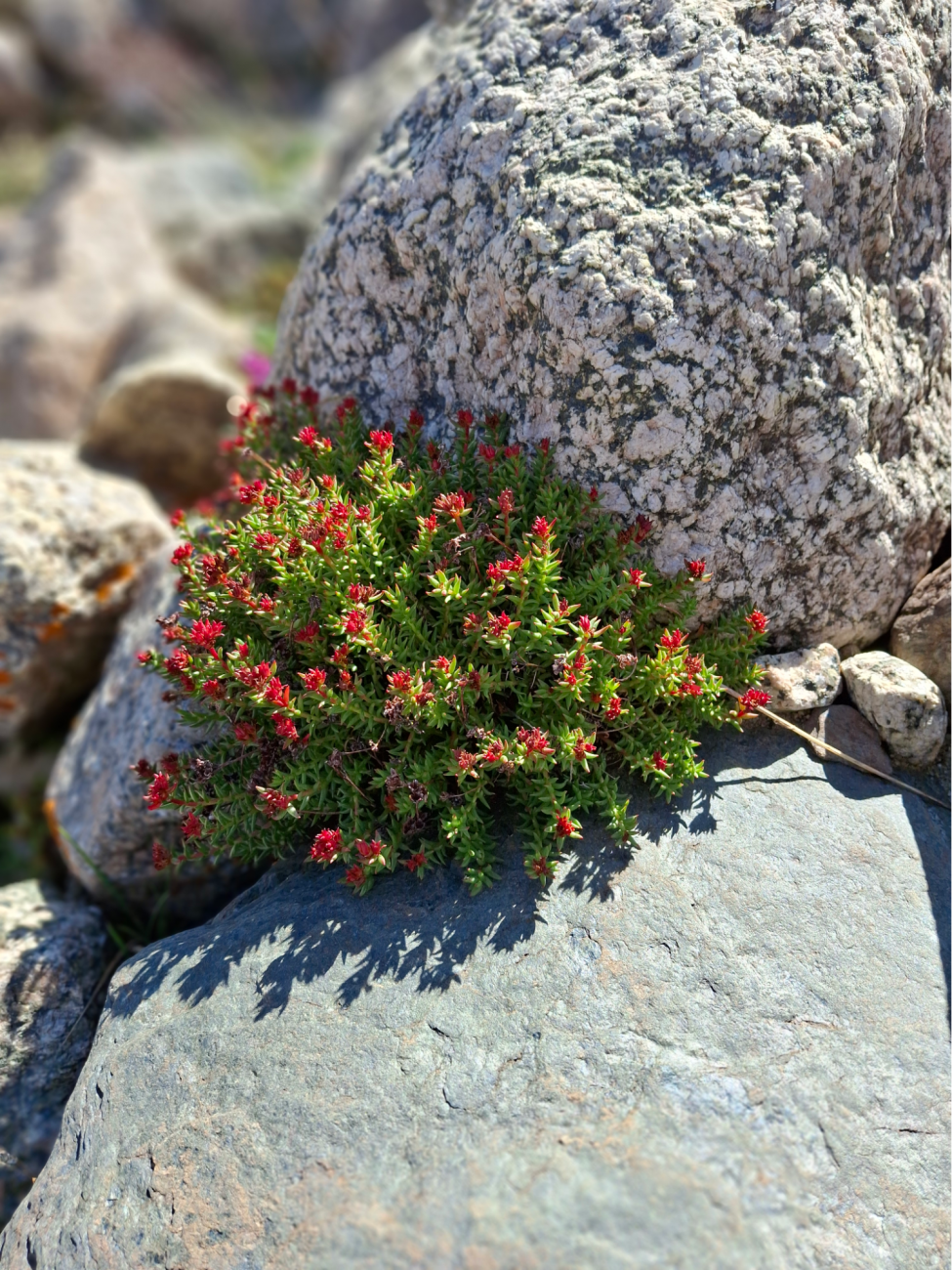
These bright mountain flowers are found in different areas of the Mongun-Taiga massif, but never lower than 2700 m above sea level. Photo by O. Makarova.
At all stages of the research, the expedition received help and care from the reserve's employees - rangers, drivers, employees of the scientific department, management; it was always confident in the safety of the work carried out, although the camp had to be set up three times in different areas of Mongun-Taiga at altitudes of over 2200 m. But the detachment always reliably returned to the base - to the hospitable home of the family of Valery Kyrgyz and Chechek Shambul.
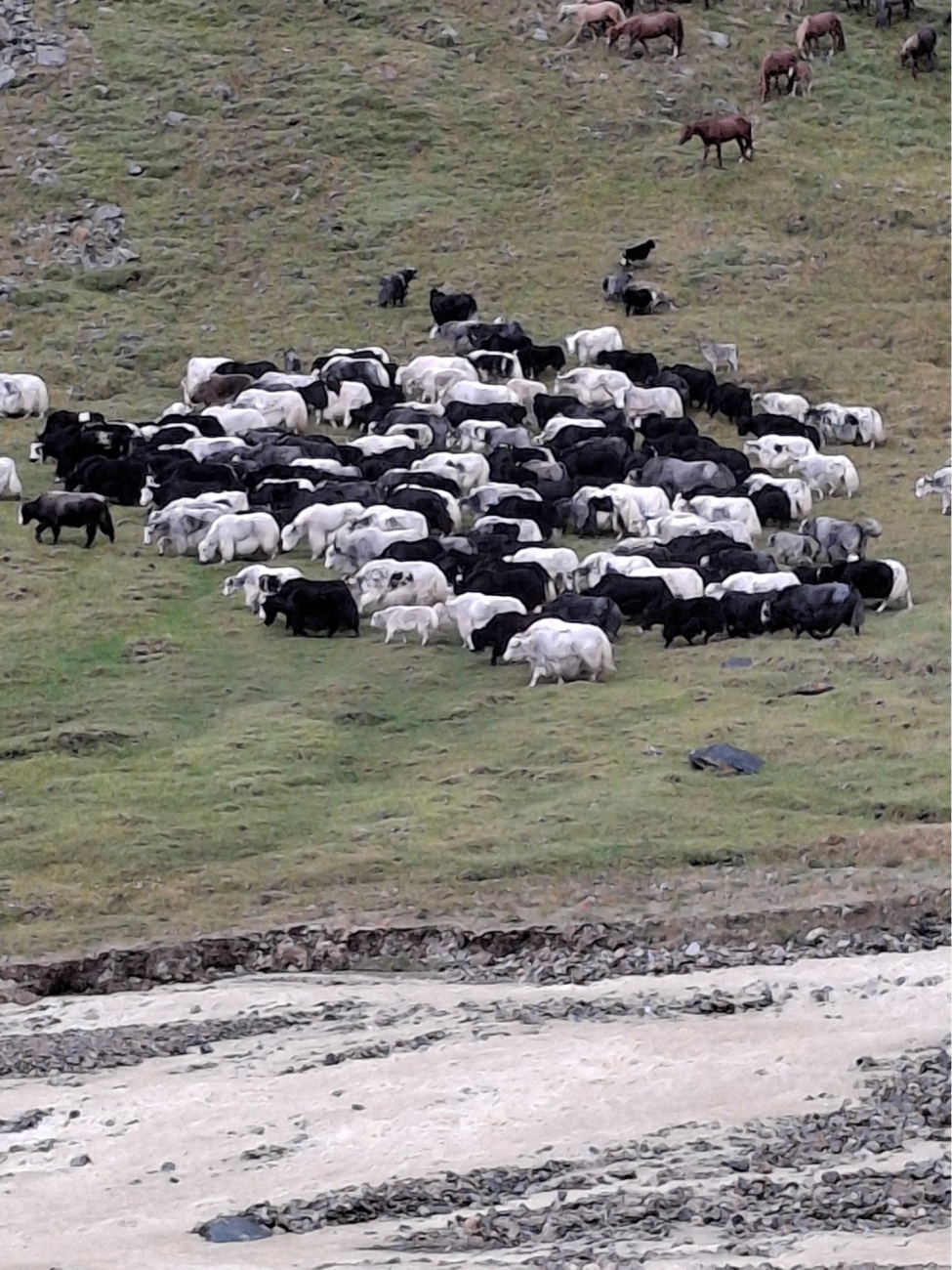
A herd of yaks, no shades of red (black, white or grey). Quite timid. Easily interbreed with cows, hybrids (hainaks) are even more colourful, but the males are sterile. In this herd, 2600 m above sea level, there are only yaks (about 140 heads). The calves look like dogs - shaggy, galloping... Photo by O. Makarova
The expedition got lucky with the weather. Although the tent had to be dug out of the snow on the first night, not a single working day was lost. A large amount of very valuable scientific material was collected. But one very important Arctic endemic, a small (only 3 mm) circumpolar weevil Isochnus arcticus, which feeds only on one species of creeping willows (Salix arctica), was not found despite great efforts. This means that the search will continue, possibly in other areas of Mongun-Taiga.
Head of the Synecology Lab of the IEE RAS, PhD in Biology O.L. Makarova
